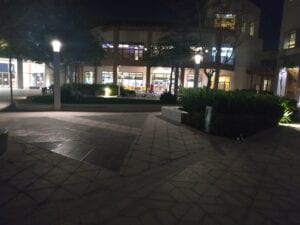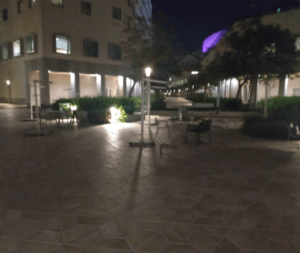The user is always right, even if they are wrong. After all, the product of any project is aimed at consumers, so if they are not satisfied with the results, what good is the product anyways?
Without question, the phrase “a customer is always right” is often abused by dissatisfied customers that regret spending their time and resources on a particular product. The scene that comes to my mind – no pun intended – is a middle-aged woman yelling at a manufacturer/seller for handing her a faulty phone, while in actuality it was one of her mischievous children that dropped it in water. In such situations often portrayed in the media, customers are almost always shown to be obnoxious and wrong. However, there is much truth that lies in the phrase “the user is always right”; designers can learn valuable information on how to improve their product even when their client is wrong, which, in the end, makes the client right. For this reason exactly, the user is always right even if they are wrong.
“How can a woman who dropped her phone be right in complaining to the seller?” you could be wondering. A manufacturer definitely learned that people who buy their products do drop their phones in the water from time to time. Therefore, that manufacturer gets a suggestion: make their phones waterproof! As simple as that. Now let’s consider this in the realm of Wayfinding…
In Wayfinding, the user is always right. When a particular design is not used how it was supposed to, it points to the lack of the usage of nudge or other efforts of consideration from the designer’s side. One of the best examples for this are park paths. Parks have grasses, and when people follow the same way to cut corners or get from one point to another, after some time there forms a grassless path. This path then becomes an indication of a path of least resistance. To account for the path of least resistance, designers should be wary of people’s preferences and first try learning their behavior in cutting corners and walking through the environment. This way, the designer will be able to build the walkways accounting for the paths of least resistance. Such an environment will not have trampled grasses. A great example of this is Hyde Park in New York City.
A similar analogue is a grassfield in front of dining hall 2 that prevents visitors from taking a straight route from the direction of Central Plaza. Instead, people need to go around that grass: either around the whole system of implementations, or around the grass but within that system still. This need to choose between the two routes instigates a feeling of indecisiveness: on the one hand, going through the system and around the grass would save time compared to a total all-around path. On the other hand, that closer route results in a very inconvenient path with sharp turns, which requires additional physical effort and a mental capacity to not stumble due to those edges and a thin path. As a result, not being able to make the best choice in a time interval of a split second puts enormous pressure on the person that just wanted to enjoy their meal. Now, there is a much simpler and a much more peaceful way of reaching the kingdom of food: going straight through the grass. In Wayfinding, this is referred to as the “path of least resistance”. It is the path that requires the least amount of effort and confrontations.

Figure 1. The dilemma I face everyday: which way to go? I often end up crossing the grass
When asked “what do you think of students crossing the grass field on their way to d2”, one of my friends said that there are students who do that as a sign of protest: such an ignorant-to-human-needs design does not deserve to be treated with respect and consideration, so it is best to do harm to that design for such things to not exist in the future. Of course, design does not follow a natural selection process: there are no genes in design systems that could be ingeniously eliminated as a result of some designs struggling to pass their genes onto the next generation. So such bad designs can reign forever if no resistance is applied against them. In other words, students walk on that grass so that the administrators notice and finally acknowledge the drawbacks of that design and take actions to improve the situation. From this perspective, crossing the grass is an artificial way of imposing challenges upon design systems and it is not only the right but also a necessary measure to improve the environment for the better of its users.

Figure 2. I can’t help but notice the perfect straight path that leads to Central Plaza
However, crossing the grass is not technically allowed. Therefore, anybody who is doing so is doing wrong in terms of rules and behavioral ethics. Thus, people who still knowingly do that show no respect for the school that has to spend a considerable amount of resources to fix the foot trail that was formed as a result of the grass-crossers’ actions. As Abraham Lincoln pointed out in the series of seven debates against Stephen Douglas, just because a particular law is bad does not mean that law should be violated. Law does not see ethics, needs, or any moral judgment. Law exists to maintain order in any particular system. Instead of violating the law, people should strive to improve it.
There are many perspectives to the righteousness of people’s actions, and Wayfinding is no exception. However, one thing is clear: people violate the order for a reason – the discovery of this reason often leads to the improvement of a system as a whole.
Great post! I can’t believe it did not generate an animated discussion! It is super interesting.
I loved the points you make! Especially the drawing of ethics and the use of “the user is always right” for a good reason, from phone makers to wayfinding design.